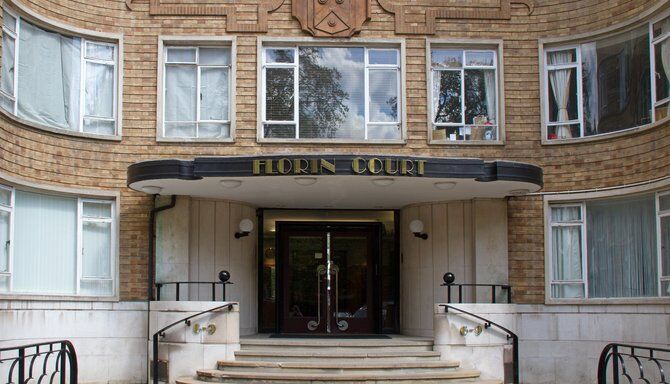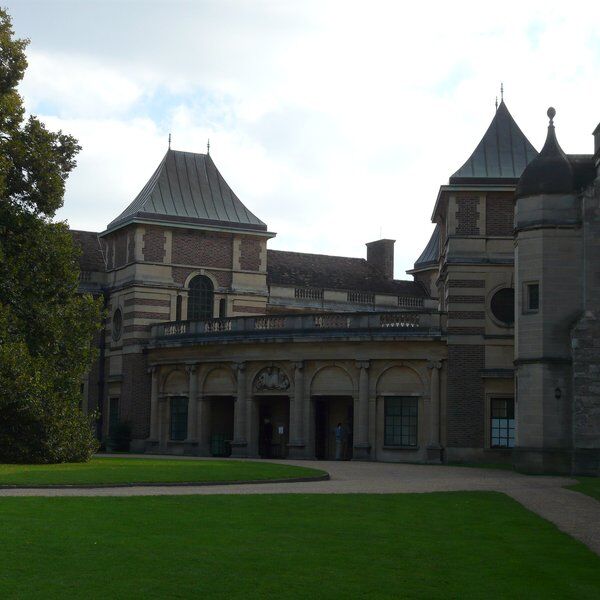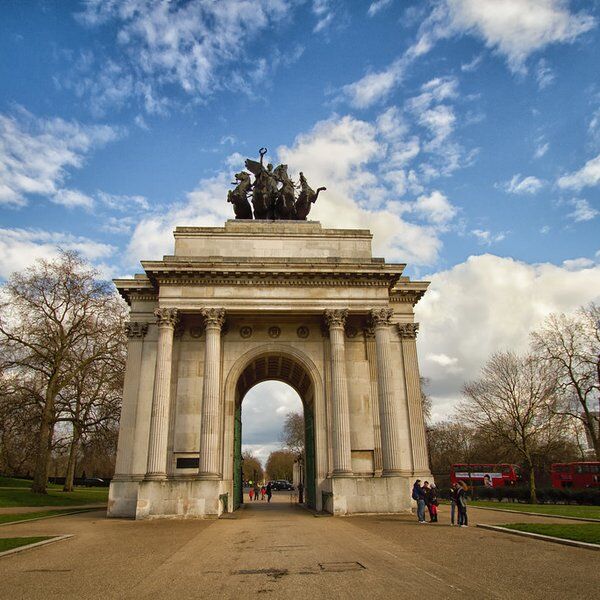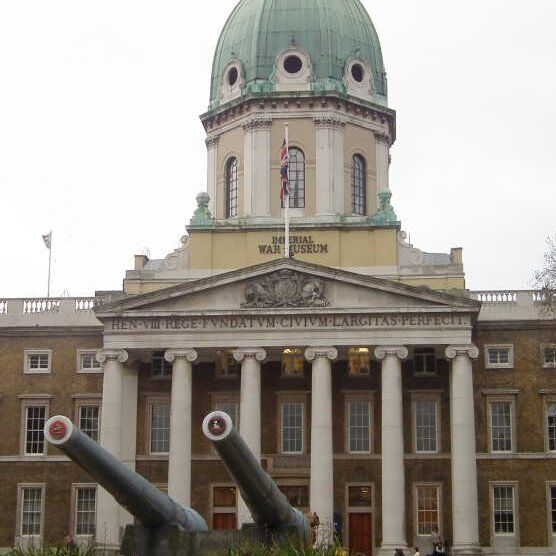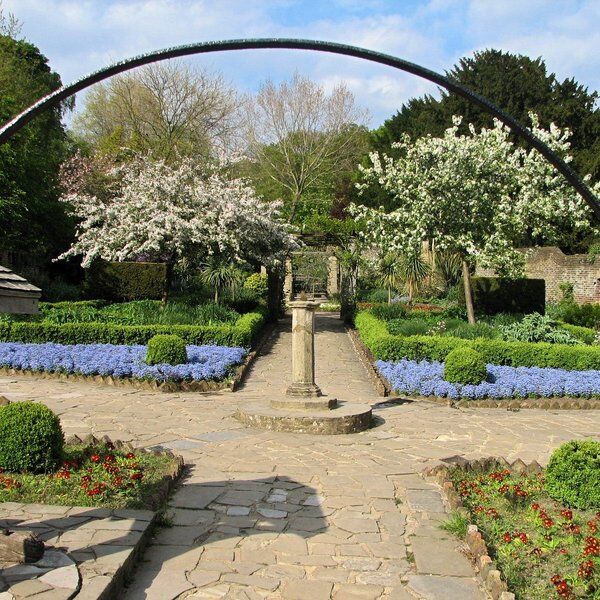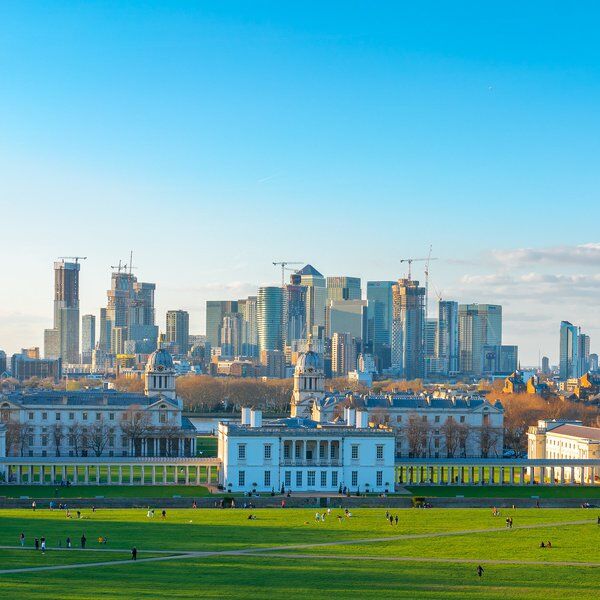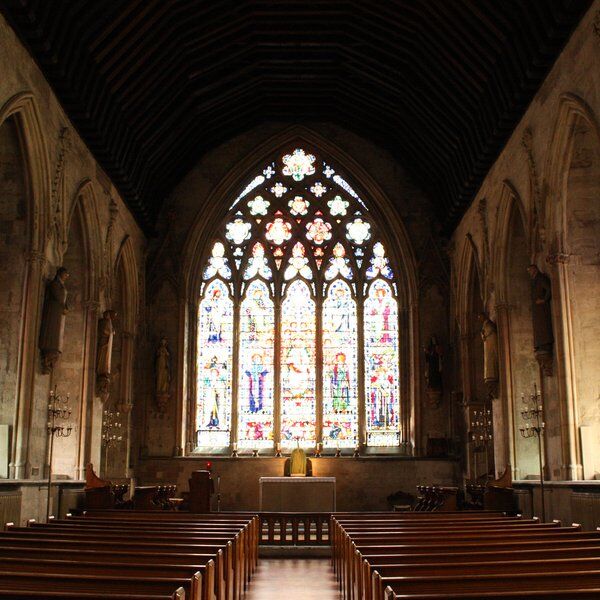Discover Florin Court
Florin Court is one of London’s iconic Art Deco and Streamline Moderne landmarks, standing proudly on Charterhouse Square in the historic Smithfield area. The elegant nine-story building was constructed between 1935 and 1937. With its curved exterior, smooth brickwork, and sleek lines, it depicts an Art Moderne style (part of Art Deco), known for smooth, streamlined details. It is these distinctive elements that made Florin Court the perfect choice to bring a highly popular fictional residence, "Whitehaven Mansions," to life on screen. However, the building is not just a film location—it also has a fascinating history.
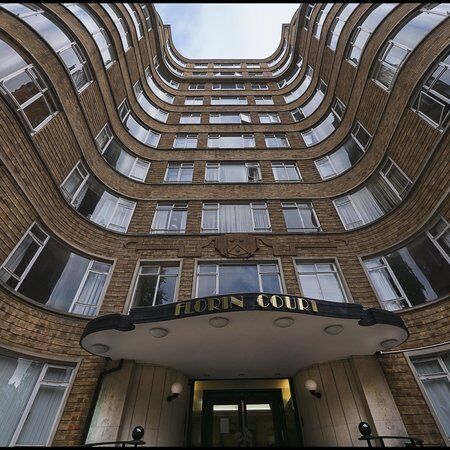
Florin Court: Wrapping Around Charterhouse Square
Designed by architects Guy Morgan & Partners, Florin Court was built with a steel frame covered with yellow and brown bricks from Great Casterton. Its most striking feature is its flowing, curved facade, which wraps around Charterhouse Square without any sharp angles or corners. This was not only an aesthetic choice but a practical one, allowing as many flats as possible to enjoy views of the surrounding square.
The original design included 126 apartments and luxurious communal spaces such as a restaurant, cocktail bar, squash courts, and parking for 20 cars. There was also a grand entrance hall, adorned with marble floors and polished wood. Inside, the flats themselves are a combination of studio and two-bedroom layouts, with one flat per floor having a more spacious sitting room.
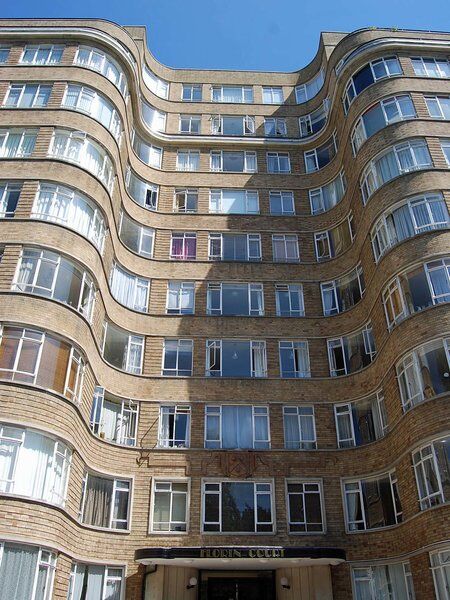
Hercule Poirot and Florin Court
For many, Florin Court is most famous as the fictional address of Agatha Christie’s beloved Belgian detective, Hercule Poirot. The building was both an exterior and interior filming location for the long-running television series Agatha Christie’s Poirot (1989–2013), starring David Suchet as the legendary detective.
Florin Court, as Flat 4G, Whitehaven Mansions, was the perfect backdrop for Poirot’s London life. The building’s streamlined design, along with its polished interiors, beautifully mirrored the detective’s penchant for order and elegance.
If you loved watching Agatha Christie’s Poirot unfold on your screens, why not delve into the beloved detective’s world of mystery and murder with a CityDays’ scavenger hunt? Hunts like Return of Jack The Ripper and Murder Mystery London allow you to put your detective thinking caps on and solve your own mysteries across London.
Beyond Poirot, Florin Court has appeared in other productions, such as the TV series Pennyworth and the 2022 film See How They Run, further cementing its status as a beloved cultural landmark.
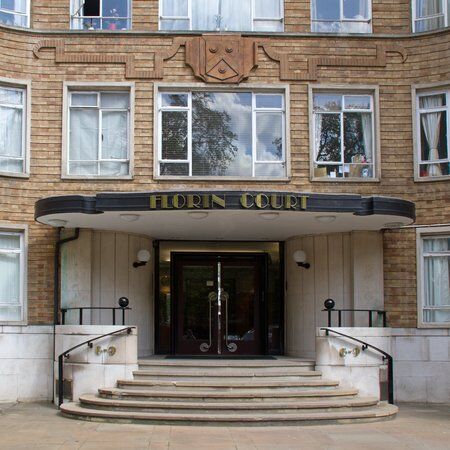
The History of Florin Court
Florin Court is easily recognizable to fans of the legendary Poirot. However, the site on which Florin Court sits—Charterhouse Square—has a much older, layered history. Below is a deeper look into this historic area and the events that shaped the development of Florin Court.
The Grim Origins of Charterhouse Square
During the outbreak of the Black Death (1347-1351), the area now known as Charterhouse Square was likely used as a burial ground for victims of the plague. This grim past laid the foundations for the square, which later came under control of the Carthusian Priory in 1560.
The priory used the land as a divider between private residences and local trade businesses. Upon the dissolution of the monasteries under Henry VIII, the priory was dismantled, and the land became a park for public use.
Private Residences in the 17th and 18th Centuries
By the late 17th century, the eastern side of Charterhouse Square was dominated by private residences with large gardens. These homes were posh and expansive, inhabited by the upper echelons of society.
Lord Grey was one of the prominent landowners in the area, owning four houses until 1694, when Peter Ward, a local brewer, purchased and redeveloped the land. Ward demolished the existing structures and built six new houses.

The Discovery of Human Remains
In the early 19th century, during sewer construction in 1834, workers uncovered human remains beneath the square, likely remnants of its use as a plague burial site centuries earlier. As time passed, the land to the south of the square became impractical for development and residential interest declined after the construction of a rail system.
As the 19th century progressed, the remaining private homes began to convert into staff housing for local businesses. By 1894, the once-prosperous square had fallen into disrepair. The park became a site for illicit activities, and vandalism grew rampant.
The Birth of Florin Court: 1935-1937
By 1935, any remaining private homes on the eastern side of Charterhouse Square were demolished, paving the way for the construction of Florin Court. The complex was built between 1935 and 1937 by J. Gerrard & Sons Ltd. The building’s total cost came to £74,000 (equivalent to around £4.5 million in 2024).
Florin Court’s distinctive façade had to be approved by the London County Council. It had a unique recessed centre and the uppermost floors were set back, giving residents access to small roof gardens. These design elements were revolutionary at the time and helped secure Florin Court’s place as one of London’s architectural landmarks.
Early Residents
Florin Court was originally developed for local businessmen, who worked at the nearby Smithfield Market. Many of the flats were designed as bedsits or small studios. However, for the wealthier permanent residents, Florin Court came complete with the wide range of amenities we have already touched on.
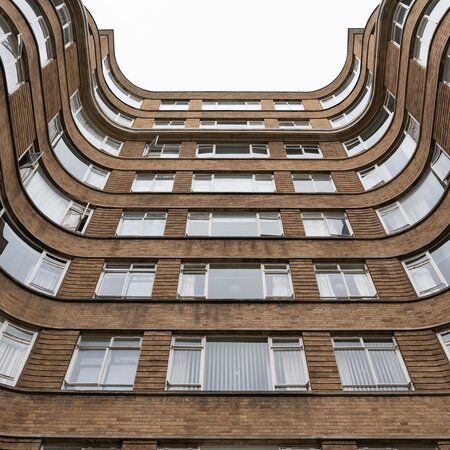
Post-War Struggles of Florin Court
Although Florin Court survived the Blitz during World War II, the building faced financial struggles in the post-war years. By the 1950s, some of the flats were converted into small offices and the building's residential appeal diminished once more. The building also underwent several changes in ownership during this period.
In 1988, Florin Court experienced a revival when architects Hildebrand & Glicker, along with interior designer Andrew Dandridge, undertook a significant refurbishment of the building.
Florin Court gained new features like a rooftop garden, private swimming pool, jacuzzi, saunas, and gym, solidifying its status as one of the most prestigious residential addresses in the city.
The restoration in the 1980s also recovered many artistic details that were becoming worn away, like enamelled surfaces, marquetry, and sleek, minimalist furnishings. But its most famous moment came shortly thereafter when it was chosen as the filming location for Poirot.
Florin Court Today and Visitor Information
Today Florin Court remains a Grade II-listed building and continues to serve as a residential building, with many of its original features and amenities still intact. This also means that visitors cannot enter without permission. (However, its exterior is a must-see for fans of Agatha Christie, Art Deco enthusiasts, or anyone with a love for London’s architectural history!)
Despite a serious fire in 2013, which required extensive restoration work, Florin Court has preserved much of its original charm, with residents still enjoying the roof gardens and other communal spaces.
The surrounding Smithfield area is steeped in history, with the nearby Charterhouse and Smithfield Market providing further reasons to visit. You can also take a short walk to the Barbican Centre, or explore nearby Clerkenwell’s dining and cultural scene.
For a full Poirot experience, consider combining your visit to Florin Court with a tour of other Art Deco landmarks in London, such as the Daily Express Building on Fleet Street or Senate House in Bloomsbury.
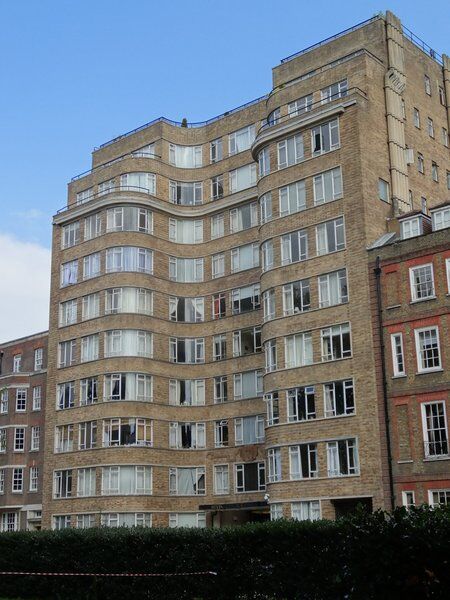
Explore Beyond Florin Court with CityDays
Florin Court is just one of many fascinating places to explore in the city.
The best way to discover more things to do in London is to take your time and, ideally, have a pre-planned route that takes you past all the noteworthy nooks and hidden gems.
We can help you there!
The City combines the fun of an outdoor treasure hunt with the historic facts and whimsical trivia of a walking tour.
Answer riddles, solve puzzles and learn more about London’s 2000-year-old history in a new and interactive way!
Take the stress out of planning your visit to London and book your adventure today!
Not visiting London this time? Don’t worry, you’ll find us all over the world.
